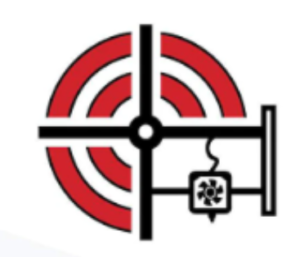Amidst many copycats, the Generative Machine Company is doing something truly innovative. This British startup is bringing to market 5 Axis Desktop Material Extrusion systems with help from software toolchain firm Ai Build. And just like your favorite cat pictures, they have been made with the help of AI.
Ai Build COO Michail Desyllas said,
“Our solution with Generative Machine represents an exciting convergence of next-generation hardware design and intelligent software automation. Their innovative approach to 5-axis printing, combined with our advanced automation capabilities, will unlock new possibilities for complex geometries and multi-directional prototyping and manufacturing that were previously impossible with traditional desktop systems.”
While Ric Real, CEO of the Generative Machine Company, said,
“For years, desktop additive manufacturing has been constrained by the conventional 3-axis approach. We want to change that by bringing to desktop users the same advanced capabilities found in robotics and LFAM. Our partnership with Ai Build is a major step toward making this technology accessible and placing a powerful new tool into the hands of the desktop users.”
The companies think that the product “allows for complex geometries to be printed without support structures and conformally, enabling improved surface finishes and part properties that can be tailored to specific use cases,” and “applications where complex geometries and multi-directional printing capabilities are essential for innovation and product development.”
Generative Machine makes some of the most beautiful 3D printers I’ve ever seen. Many of the components are made using Powder Bed Fusion in aluminum, so I’m thinking that the printer will be pricey. These components were designed using generative design, specifically using Fusion’s Generative Design tools. That AI bit enabled Ric Real to make these components lightweight and specifically designed to speed up the printer’s printing. But they also mean that the body and motion stages consist of four main parts, simplifying assembly and making this a solid, rigid printer. The printer is powered by Duet3D, and the team is working on closed-loop control for the machine and a photogrammetry capture module that can 3D scan objects for closed-loop control or to print on existing parts.
The five-axis functionality, which includes a tilting build platform, allows for more complex geometries and tougher parts. Reducing support requirements, speeding up some builds, allowing for conformal parts, and producing better-looking parts are also potential advantages of such an approach. Better surfaces and perhaps more water or airtight surfaces could also be a result. Optimizing part strength during design and further optimizing it for how a part is to be used could be a major advantage for many prospective users. The system seems to be compatible with TPU and other flexible materials. In that case, specifically for helmets, protective gear, shoes, and other flexible soft things that fit humans, the Generative Machine system could be an exciting solution.
We reached out to Ric and he told us that,
“The benefits of multi-axis – aren’t just to do with reduced support material, lots of people immediately comment on our videos saying ‘wow no supports,’ but you can also create stronger parts with new slicing strategies. A lot of that is still research, but it will mature and I think make its way into machines like this. Aesthetically you can achieve cleaner surfaces with less stair-stepping on overhangs, and you can also do things like conformal printing where you can print (or laser engrave) onto existing objects. We can get a 3D scan of a part on the build plate and use that as a surface to print or engrave onto. We’re keen to really experiment with the platform and different extrusion processes, for example with bio print heads or clay extruders to make ceramic non-planar coffee cups. It is more to experiment with those processes and multi-axis printing technology.”
Toolpathing is usually a nightmare with these systems, but Ai Build should make it easier to keep track of all the moving parts and build up parts. Slicing will also be complex, and learning to design for this system could require some real new thinking. A lot of people will look at this and conclude that this will be way too expensive to be seriously commercially viable. Powder Bed part pricing is coming down, and perhaps some parts could be substituted with different technologies. Something like this Generative Machine printer would really be valuable to prosthetists, hospitals, and in sporting protective gear. The printer is open source, so perhaps many others will build on this project and reduce the costs somehow. Even without this happening, more people are being inspired to look into the five-axis.
Five-axis printing would go a long way toward making end-use parts on the desktop. The complexity of these systems and the initial cost look daunting. The file, design, slicing, and toolpathing can look even more difficult still. But if we overcome these hurdles with available tooling, we can build a more functional desktop factory. Looking beyond stacking layers to a more complex approach may let us make many more functional components conveniently. Not enough people have been paying attention to or working on five-axis desktop 3D printing; hopefully, Generative Machine will change that.
All images courtesy of Ai Build and Generative Machine Company
Subscribe to Our Email Newsletter
Stay up-to-date on all the latest news from the 3D printing industry and receive information and offers from third party vendors.






